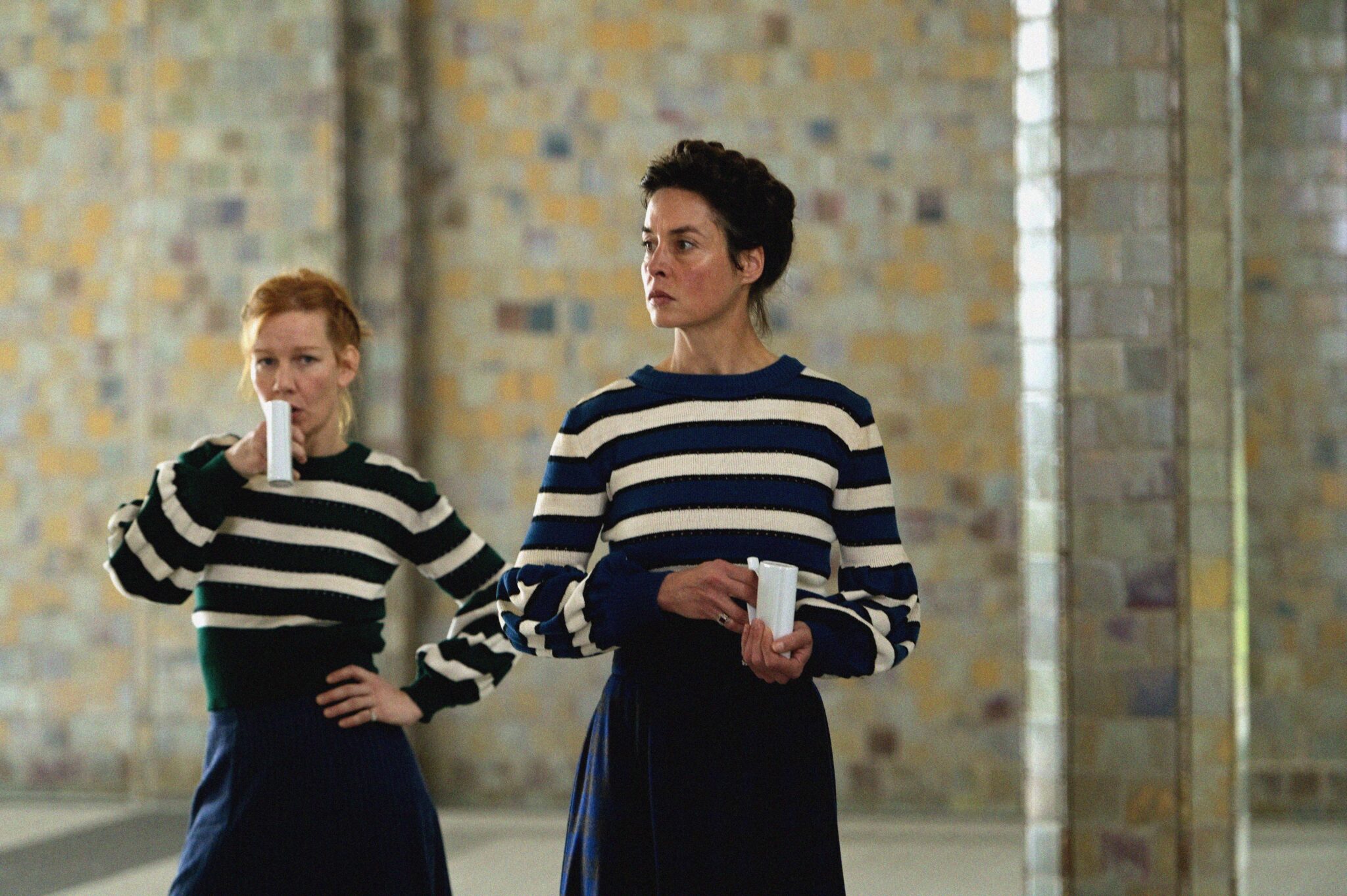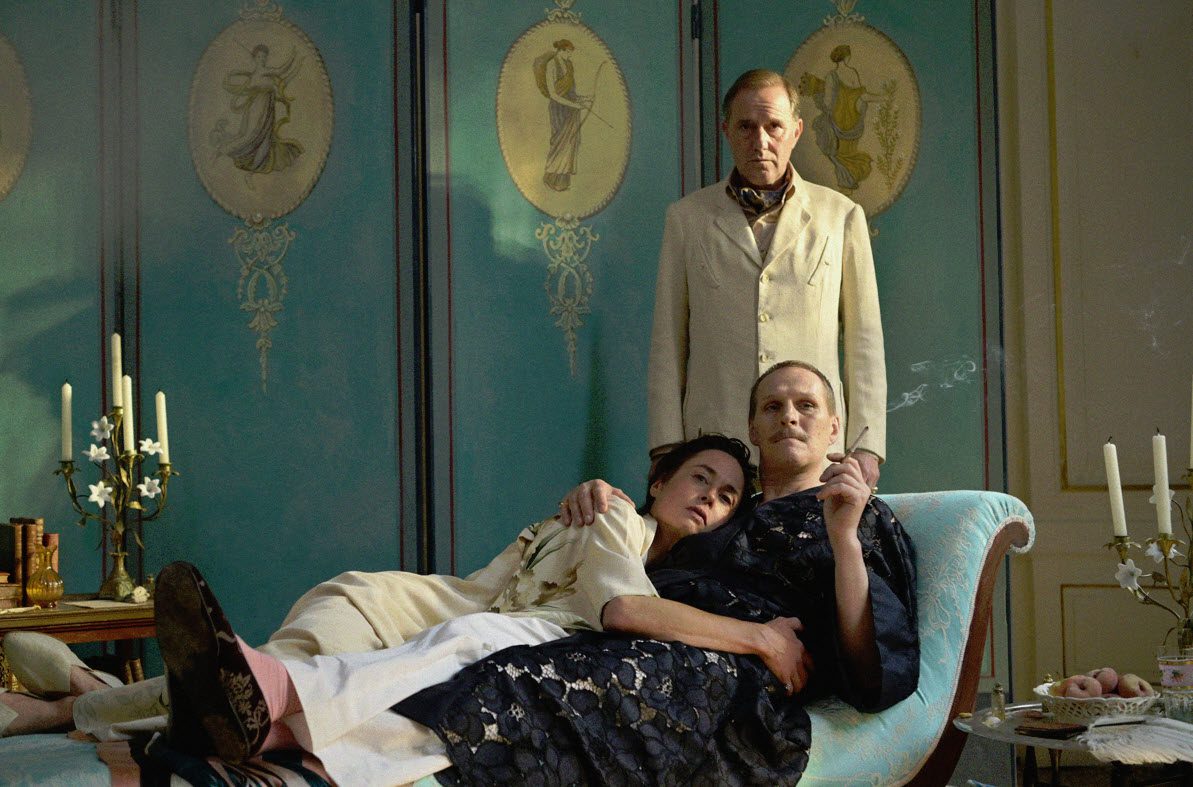“Being in her presence was like having all the world’s light shining upon you. But when she turned off that light, it was like a shard of glass piercing your heart.”
From director and co-writer Frauke Finsterwalder, Sisi & I is a retelling of the story of Elisabeth of Austria from the point of view of her lady-in-waiting. It is a complex relationship that reflects the complexity of Elisabeth (aka Sisi) and of the times. Love, manipulation, abuse, and jealousy all swirl in intriguing patterns that seem very up-to-date even in a 19th century setting. In some ways, Elisabeth was a 19th century analog to Princess Diana in our time. She was beautiful and adored by the public, but also very unhappy in her role within the royal court.
The focus of the film is Countess Irma Sztáray (Sandra Hüller), whom we first see on her way to be interviewed for the position of lady-in-waiting. At age 42, and unmarried, there are few other prospects for her life. When she is accepted, she is off to the Greek isle of Corfu to meet Elisabeth (Suzanne Wolff). Irma will be Elisabeth’s companion for four years until Elisabeth’s assassination.

Elisabeth has set up residency in Corfu away from the court. Here she has created something of a women’s commune where everything revolves around her. The only real sin here is to be bored—or boring. She immediately puts Irma through a series of trials. Yet Irma is fascinated and completely attracted to her. The two women become close. Yet, the power dynamic of the relationship is very one-sided.
At times it seems that Elisabeth and Irma are the closest of friends. Yet at one point Elisabeth cruelly tells Irma they are not friends. Elisabeth is mercurial (in modern parlance we might say bi-polar). She has eating disorders (and expects others to eat the same way). She can be manipulative. She is sometimes abusive. She is often inconsiderate to those, who like Irma, have come to love her. Yet she seems to be constantly seeking new and exciting experiences, and Irma is enjoying this life. Irma would do anything for Elisabeth. But what is she really getting in return?
Empress Elisabeth of Austria has been the subject of many films, books, plays, an opera, a ballet. Yet I never really knew about her until the 2022 Netflix series The Empress and the film from the same year Coursage. Perhaps the recent surge in interest is based on the ways that Elisabeth models modern womanhood.

This is emphasized in Sisi & I in the costumes and music. The clothing worn by Irma and Elisabeth never seems an anachronism, but it does seem more modern than we expect from the time. They clothing is loose and comfortable. (Skip the corsets, which represent the confining nature of the court.) The music (which the characters sometimes sing along with) is all from today and all by women artists. This treatment feeds into the way Elisabeth’s story has been used to consider female empowerment.
This, however, is much more an examination of the way power in any relationship can create issues. The dynamics of Sisi and Irma’s relationship often leaves Irma frustrated. Elisabeth lets her get close, but then cuts off intimacy. Irma almost feels like an equal at times, but then is harshly put into her place. Through it all she yearns for Sisi’s attention.
The concept of abuse comes to the surface from time to time. Irma’s mother punches her in the face at one point. When Elisabeth must return to court and her husband, he is physically abusive with her during the night. And we often get the sense that Sisi’s manipulations of Irma and others is essentially a form of abuse, even if not physical.

All of this moves the story out of the realm of empowerment. Instead we discover that power that is used without concern for others can destroy the love that everyone seeks.
Sisi & I is showing in select theaters.
Photos courtesy of Film Movement.





